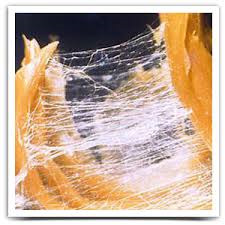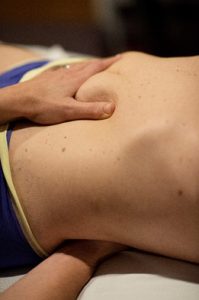My father liked to say that scars are signs of a life well lived. As an Eighth Air Force B-17 navigator during World War II, he would know. He flew 32 missions over Europe, well beyond the “Lucky Bastard Club” level of surviving 25 missions.
I must have lived my life really well because I’ve got lots of scars to prove it. I have a long one on my bikini line from a C-section. Eleven years ago it got a connecting scar that runs all the way up to my sternum, a life-saving gift from my first cancer surgery.
I look like I have a big anchor on my belly. It reminds me of medieval anchoresses, who lived in deep seclusion to seek out their greatest possible happiness. My anchoress status bought me not only life, but a whole new life that includes deep and growing joy. And the scars don’t have to limit me or weigh me down anymore.
What to do about all that internal scar tissue? I have lost several non-essential organs and am lucky to still have my bladder. But my insides are packed, nevertheless, with loads of scar tissue.
I found the answer in fascia (body-wide connective tissue) release, which involves compression and then extension of scar tissue. My practitioner is Lauren Clark Cadman, who I met at a HIME wellness event in Cincinnati two years ago.
At the time I was looking for another option for healing my hand that had been broken in three places after falling off a galloping horse. Physical therapy was unable to help me with the long-term inflammation and swelling. I could not curl my hand, and typing was a painful issue—especially because writing is my “thing.” Lauren cleared it all up in eight sessions and I regained full, pain-free use of my hand again.
I decided to let her work on my abdominal scar tissues. I learned that during each session, it’s best to lie quietly, breathe deeply, and listen intently to my body while she’s working.
Recently she was compressing around my bladder. While she held one spot for a long time, I saw an image of a donkey nose. I chuckled and told her what came to me. As I talked, the scar tissue relaxed and let go. It was being stubborn like a donkey until it was recognized and given the attention it wanted. Then it no longer needed to hold on so tight. I could feel blood flow going down to my toes, loosening up more tissue.
During my most recent session, she was again working around my bladder and intestines. The right side of my body gave a big twitch. After the session, I went to my car and soon found myself crying. I cried off and on for the rest of the day. I understood more deeply how emotional pain is stored in the body, and it’s this kind of pain that can create digestive issues and chronic dis-ease. Lauren quotes a common saying that “the issue is in the tissue” because the subconscious mind stores painful memories in fascial tissue. It’s a way for the brain to protect us until we can safely process our feelings. When we are no longer in fight or flight mode, the body is able to let go of the pain. Crying is a normal and healthy result of this treatment.
I’m not expecting the visible scar tissue on my skin to disappear, but the internal holding is letting go, giving me more space on every level.
I now have more freedom of movement in my entire body–also in part because of practicing tai chi daily during the past couple of years. I used to be much more stiff and had to put a lot of effort into getting in and out of a saddle. Not anymore.
I ain’t done yet, though. This week I woke up from a dream in which I was taking the wooden covering off a mummy. Oh no, my cover’s been blown! More wrappings of myofascial scar tissue in my abdomen need to be released.
It’s time, I’m ready, and so is my body.
Anchor’s away! I’m sailing into my bright new life with good health.


 From 1988 to 1993 there were over 2,700 articles dealing with milk recorded in the ‘Medicine’ archives. … They were only slightly less than horrifying. First of all, none of the authors spoke of cow’s milk as an excellent food, free of side effects and the ‘perfect food’ as we have been led to believe by the industry. The main focus of the published reports seems to be on intestinal colic, intestinal irritation, intestinal bleeding, anemia, allergic reactions in infants and children as well as infections such as salmonella. … Contamination of milk by blood and white (pus) cells as well as a variety of chemicals and insecticides was also discussed… In adults the problems seemed centered more around heart disease and arthritis, allergy, sinusitis, and the more serious questions of leukemia, lymphoma and cancer.
From 1988 to 1993 there were over 2,700 articles dealing with milk recorded in the ‘Medicine’ archives. … They were only slightly less than horrifying. First of all, none of the authors spoke of cow’s milk as an excellent food, free of side effects and the ‘perfect food’ as we have been led to believe by the industry. The main focus of the published reports seems to be on intestinal colic, intestinal irritation, intestinal bleeding, anemia, allergic reactions in infants and children as well as infections such as salmonella. … Contamination of milk by blood and white (pus) cells as well as a variety of chemicals and insecticides was also discussed… In adults the problems seemed centered more around heart disease and arthritis, allergy, sinusitis, and the more serious questions of leukemia, lymphoma and cancer.

